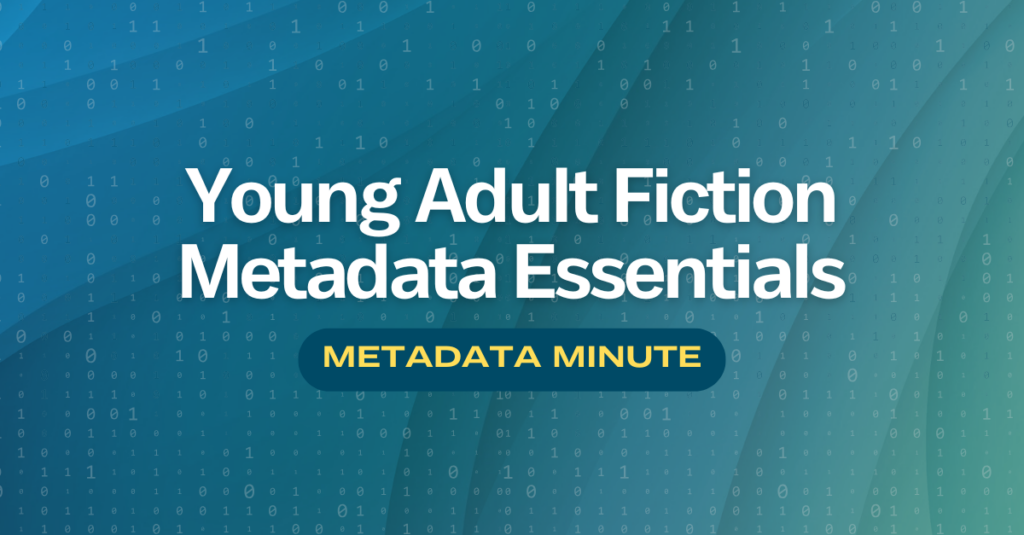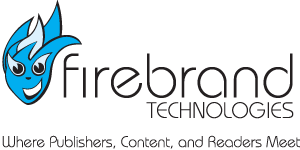
Metadata Minute (Issue #14): Young Adult Fiction Metadata Essentials
Unlocking the full potential of young adult (YA) fiction publications involves understanding their unique metadata needs, especially when it comes to enhancing discoverability in a competitive market. While YA fiction shares some metadata elements with other genres, there are key aspects that can be optimized for better sales and audience engagement. Below are some YA fiction metadata suggestions.
BISAC Subjects
Works of Young Adult Fiction should only be assigned BISAC subjects in the Young Adult Fiction categories. Even if a young adult title would also be enjoyed by adults or children, like the Harry Potterseries, it is best to refrain from attaching Adult Fiction or Juvenile Fiction BISACs on YA titles so it doesn’t get improperly categorized on online retailer websites and/or confuse consumers on the intended audience.
Remember, be as specific as you can with BISAC subjects. Young Adult Fiction titles, especially, have a LOT of subgenres so definitely be sure and take advantage of these to purely encapsule the theme of the book. Try to avoid the ‘General’ subject whenever possible, especially as the primary subject. BISG recommends placing at least three BISAC codes per title.
TIP: The “YOUNG ADULT FICTION – Media Tie-in” code is used when a title has been re-issued because of a movie/TV show, is the novelization of a movie/TV show, or is an original story using characters or settings from a movie/TV show.
Visit the BISG websitefor more information and tips on BISAC subjects.
Audience / Age Range
In your ONIX feed or Title Management system, make sure your declared audience and age range matches that of a young adult’s. The appropriate audiences for YA books are within ages 12-18 and grades 7-12. However, it’s best to pick smaller, targeted ranges, as YA books can vary widely in content, from more lighthearted middle-grade crossovers to darker, mature-themed books for older teens.
Series and Box Sets
Young Adult Fiction often involves series, making it crucial to clearly define where a book fits within a series, set, or collection. Some publishers specify the book number in the series within the title of the product, such as “Catching Fire: The Hunger Games, Book 2”. This helps readers easily find the next book in the series or start at the beginning. It can also be listed in the subtitle or defined in ONIX under a Collection.
To learn more about how collections are defined in ONIX, visit our previous Metadata Minute: Understanding Collections, Sets, and Series in ONIX 3.0
Edition
Publishers should always specify the edition of the YA Fiction book. While new editions are less common for novels compared to textbooks, if a book has been re-released with bonus content, or anniversary editions, it’s important to define this in the metadata. Utilize the ‘Edition’ field in your ONIX feed or Title Management system to specify these details. Including multiple editions, if applicable, ensures readers can easily find the version they want.
Formats
According to a study from WordsRated in 2023, over 40% of Young Adult customers are reported to read ebooks, making them the highest ebook purchasing rate across all genres, including adults. However, 71% of those who buy YA ebooks said they’d buy a printed copy if the ebook wasn’t available.
Having ebook versions of YA titles is extremely important for this age group so it’s necessary to ensure that, if your book does have an ebook, you’re reflecting in your metadata and linking those formats together. Be sure to drill yourself on Ebook Metadata Essentials when sending off these titles.
Cover and Assets
YA Fiction thrives on eye-catching cover art, so it is very helpful to have monitoring systems in place (such as Eloquence on Alert) to ensure your image is showing up accurately on retail sites. Providing extra images, such as the back cover, interior or character art, illustrated maps, etc. is also a good idea, not only because it helps your title achieve higher sales ranks, but also because younger adults are statistically more likely to purchase something online that has multiple images — compared to older generations (Source: PowerReviews).
We also always recommend including a sample (both as an uploaded Sample and as a metadata Excerpt) for fiction titles so readers can preview the book.
Awards and Reviews
If your YA book has won any awards or received notable reviews, especially from well-known sources, be sure to include this information in the metadata as soon as possible. Parents, teachers, and librarians often use awards to guide their purchasing decisions.
Other Metadata
YA Fiction often relies on strong marketing hooks, such as comparisons to other popular books or series (“Perfect for fans of The Hunger Games“). This is often portrayed in the title description or on the book cover itself. Beware of relying on these too frequently and ensure that the book you’re relating it to is in fact a comparative title. If not, you may lose reader trust and receive poor reviews/ratings. This practice is also frowned upon by some retailers, so use it with caution.
If your book includes exclusive content, such as author notes, an alternative ending, bonus chapters, is a signed copy, etc., make sure you highlight this in your book description and keywords. Including a bulleted list of any special features or exclusive content can make your book stand out to potential buyers.
For further guidance, subscribe to the Metadata Minute! You’ll get a notification on LinkedIn whenever a new issue is available – we won’t send you ANY emails.
The Metadata Minute is your monthly guide to boosting book sales and visibility by mastering metadata elements! Whether you’re an author, publisher, marketer, or industry enthusiast, “Metadata Minute” has something to offer everyone.
🔍What to expect:
- Insights from industry experts
- Tips and techniques to perfect your metadata for backlist & frontlist titles
- The latest industry trends in metadata practices, ensuring you’re always one step ahead
- Case studies proving the power of metadata transformations
Subscribe today to receive the “Metadata Minute” newsletter on the last Monday of each month. If you missed it, they will also be included in our monthly Firebrand Newsletter, sent straight to your inbox.
